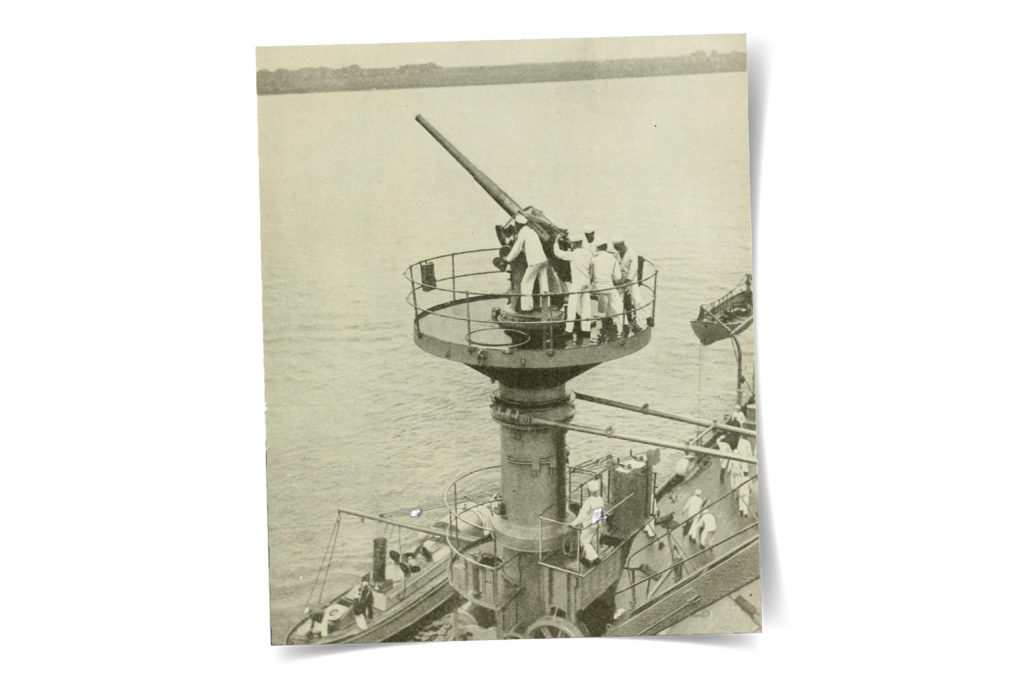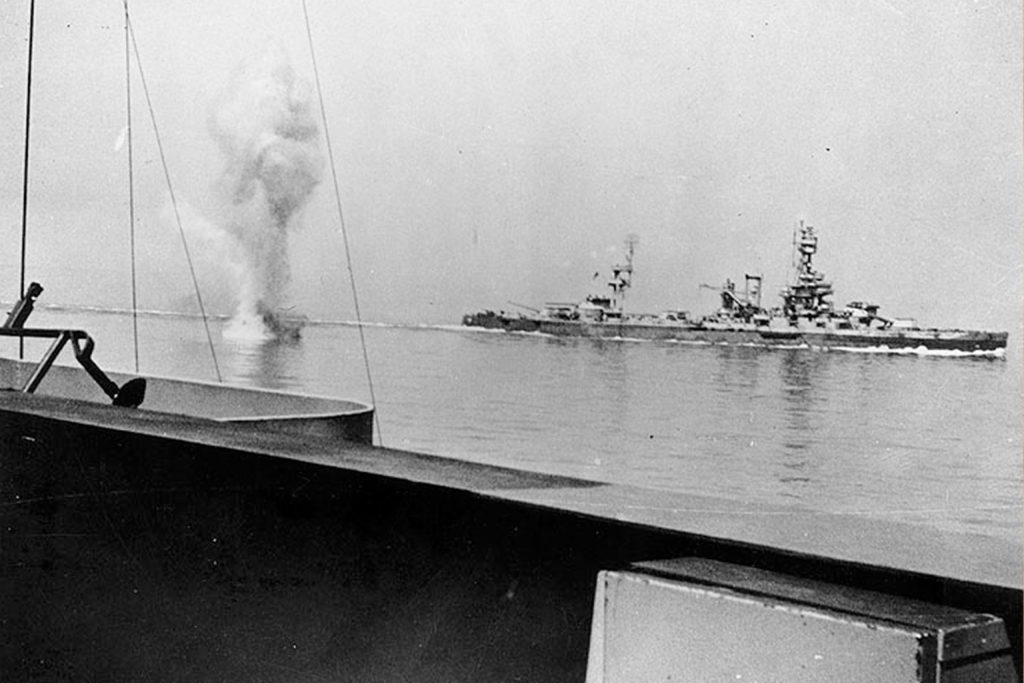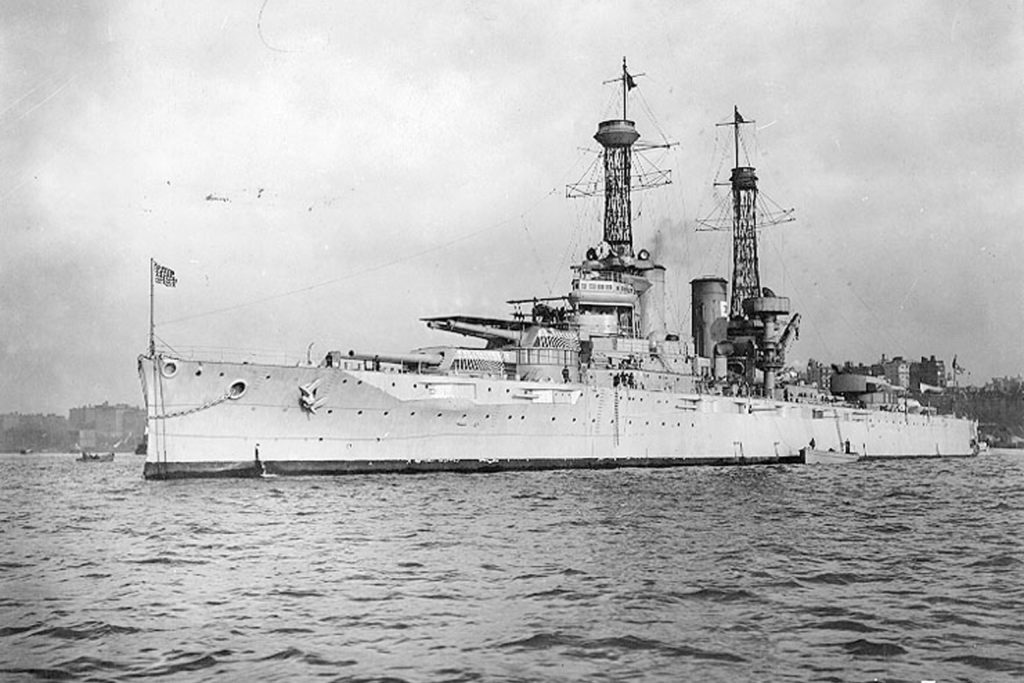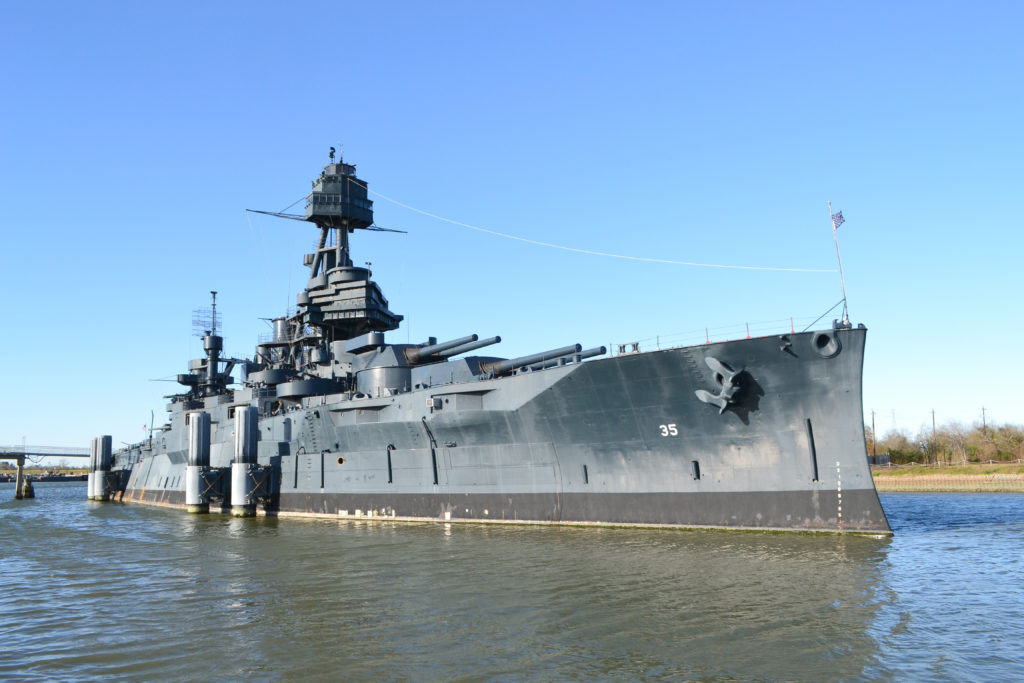The Incredible Story of the Battleship USS Texas (BB-35)
For more than 70 years, a massive battleship has sat docked in La Porte, directly across the road from the San Jacinto Monument.
If you’ve never visited the floating naval museum, you might not think much of battleship USS Texas (BB-35). But the naval vessel is one of the most storied ships in the history of the U.S. Navy. Commissioned during World War I and serving in both the European and Pacific theaters of World War II, the battleship Texas was a technological marvel when it first launched, and it has continued to astound and inspire the many thousands of visitors it welcomes each year.
Now, as the 100-plus-year-old battleship prepares for a major renovation before moving to a permanent home on the Gulf Coast, we look back at its incredible history.

A State-of-the-Art Weapon
The battleship USS Texas (BB-35) was first launched out of shipyard in Virginia on May 18, 1912, and commissioned two years later in 1914. It was equipped with 10 14-inch guns that could fire 1,400-pound shells at a range of 13 miles — incredibly powerful weapons for the time. The battleship Texas also packed four 21-inch torpedo tubes. Although World War I was already raging in Europe, the battleship Texas was first sent into Mexican waters in response to the detaining of an American boat crew by Mexican federal troops at Tampico.
After returning to the East Coast for patrolling and repairs, the battleship Texas was eventually pressed into blockade duty in the North Sea after the U.S. entered World War I. But the battleship Texas would not see much action during the First World War, spending its time in service escorting other vessels and patrolling with the Royal Navy’s Grand Fleet.

On the Front Lines
In the early 1940s, the ship was equipped with larger guns, while wartime upgrades saw the installation of radar and anti-aircraft guns. The battleship Texas also catapult-launched Vought OS2U Kingfishers. These improvements made the battleship Texas a particularly deadly and effective weapon. In October 1942, the battleship Texas was sent to North Africa, where it provided support for the Allied landing. But the ship became most famous for its role in another amphibious assault: the D-Day invasion on June 6, 1944. During the attack, the Texas’ heavy cubs bombarded German defenses on Omaha Beach. After the invasion, wounded Allied troops were received and treated on the ship.
The battleship Texas would see additional action in the European theater before being dispatched to the Pacific. It stopped in Long Beach, California, and Pearl Harbor, Hawaii, on the way for repairs and arrived in time for the invasion of Okinawa, Japan. For six days, the battleship Texas bombarded the island as the military prepared for an invasion. During the attack, the battleship Texas evaded damage from several kamikaze attacks. The long, drawn-out invasion of Okinawa took three months. The battleship Texas remained for two of the three months, providing support for the Allied troops on the ground.

Finding Peace in Texas
After the end of the war, the battleship Texas took place in what would end up being its last military operation. Operation Magic Carpet was a massive mobilization of the War Shipping Administration to bring home the many thousands of military personal stationed overseas. It sailed from the South Pacific to San Pedro, California, and made two additional round trips to Oahu, Hawaii, to bring home veterans. By 1946, however, it was clear the time had come to deactivate the war-weary ship.
In 1947, the Texas Legislature established the Battleship Texas Commission to help care for the ship. A year later, it made its way through the Houston Ship Channel to a dock near the San Jacinto Monument where it would rest for the next 70-plus years. The battleship Texas became the first permanent battleship memorial museum and was ceremonially commissioned as the flagship of the Texas Navy. On average, around 80,000 people visit the ship every year, where they learn about its impressive history and role in the 20th century’s most significant military conflicts.

Preparing for a New Chapter
By 2019, it was clear the battleship Texas needed major work. Its hull was leaking around 2,000 gallons per day, and there was a large amount of deferred maintenance to its superstructure and other systems. Part of the problem was that the museum, although one of the most popular attractions in the state, was not attracting enough visitors to support its upkeep. The Battleship Texas Foundation began preparing for a major renovation as well as a new home, where more people could experience life onboard the battleship Texas.
This summer, a dry dock was transported from the Bahamas to Galveston to prepare for the $35 million rehaul. As the boat sits in La Porte, waiting to be towed through the Houston Ship Canal to Galveston, staff and volunteers have begun work patching and repairing its historic weaponry and large superstructure. A whopping 23,000 cubic yards of mud had to be removed from around the ship just to make it possible to move off the dock. Later this year, it will be transported to the dry dock.
A permanent home has not yet been chosen, but the three sites in consideration are Baytown, just east of Houston; Beaumont; and Galveston. When the battleship Texas is securely in its new home and reopened for visitors, you won’t want to miss experiencing this great Texas historical treasure.
Learn more of Texas’ maritime history here.
© 2022 Texas Farm Bureau Insurance



